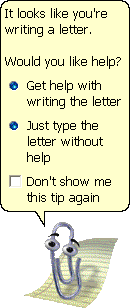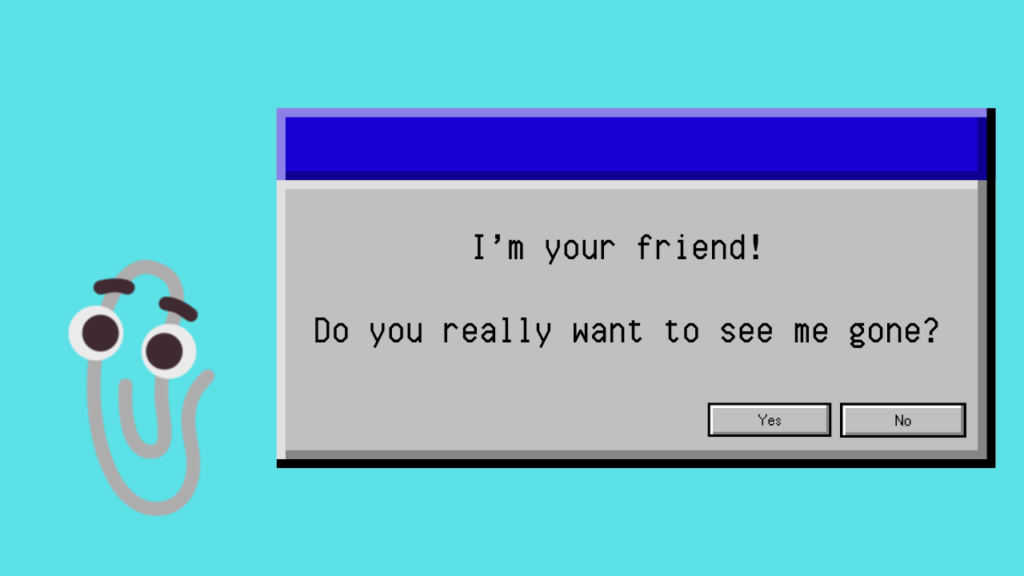Ah, Clippy. Love it or hate it, if you used Microsoft Office in the late ’90s and early 2000s, you probably have a memory or two of that little paperclip with the googly eyes. Officially known as the Microsoft Office Assistant, Clippy was designed to be a friendly guide, helping users navigate the complexities of Word, Excel, and the rest of the Office suite. But like many well-intentioned innovations, Clippy’s story is one of ambition, mixed reception, and eventual retirement. Let’s dive into the rise and fall of Clippy, a digital assistant that became a pop culture icon—often for all the wrong reasons.
The Birth of Clippy
The year was 1997, and Microsoft was in the midst of rolling out Office 97, a major update to its flagship productivity suite. The idea behind Clippy was simple: make Office easier to use, especially for beginners. Microsoft’s developers envisioned Clippy as a helpful guide, popping up with tips and suggestions just when you needed them most. It was meant to be an intuitive assistant that could anticipate user needs and offer help without being asked.

Clippy wasn’t alone, either. Microsoft Office Assistant was a feature that included several characters, from the dog Rover to the Einstein-like Professor. But Clippy—officially named Clippit—quickly became the face of the Office Assistant lineup. Its simple, friendly design was supposed to make the often daunting Office suite feel more approachable.
The Features and Functions
Clippy wasn’t just there to look cute; it had a job to do. The Microsoft Office Assistant was designed to:
- Offer Help: Clippy would pop up whenever it detected that you might need assistance. For example, if you started writing a letter, Clippy would appear with suggestions on how to format it.
- Provide Tips and Shortcuts: Clippy could suggest tips and shortcuts to make your work easier. It would offer advice on everything from using templates to formatting documents.
- Answer Questions: Users could type in questions, and Clippy would attempt to provide an answer or direct them to the right feature.
- Guide Through Tasks: For more complex tasks, Clippy could guide users step-by-step, ensuring they didn’t get lost in the myriad of options that Office offered.
The concept was solid: provide users with a friendly, intelligent assistant that could make the Office suite easier to navigate. For beginners, this seemed like a godsend—someone (or something) was there to hold your hand through the process.
The Mixed Reception
But things didn’t go quite as planned. Almost as soon as Clippy made its debut, the backlash began. Users found Clippy’s constant interruptions more annoying than helpful. Instead of being a quiet guide in the background, Clippy often felt like an overzealous coworker, popping up at the most inconvenient times with unsolicited advice. The phrase “It looks like you’re writing a letter” became synonymous with unnecessary interruptions.

Moreover, Clippy’s ability to assist was limited. It could provide basic help and suggestions, but it often fell short when users needed more detailed guidance. This led to frustration, as users found themselves clicking through Clippy’s prompts only to end up more confused than before.
By the early 2000s, Clippy had become a symbol of the disconnect between Microsoft’s intentions and user expectations. What was meant to be a helpful tool had turned into a punchline, emblematic of software that tried too hard to be helpful without truly understanding its users’ needs.
The Decline
By the time Office 2003 rolled around, Clippy’s days were numbered. Microsoft had heard the complaints loud and clear. Users wanted a more streamlined, less intrusive experience, and Clippy just didn’t fit the bill anymore. In Office XP (released in 2001), Microsoft made Clippy less prominent, and by Office 2007, the Office Assistant feature was completely removed.
The decision to retire Clippy was met with mixed emotions. Some users were relieved to see the end of the pesky paperclip, while others felt a twinge of nostalgia. After all, Clippy had become more than just a feature—it was a part of Office’s identity, for better or worse.
The Legacy of Clippy
Even after its retirement, Clippy remained a cultural icon. It became the subject of countless internet memes, jokes, and even fan art. For many, Clippy represents a time when software design was still grappling with how best to interact with users. It’s a reminder of the early days of digital assistants, long before Siri, Alexa, or Cortana became household names.

Interestingly, Clippy has made several “comebacks” over the years, often as a nod to nostalgia. Microsoft even briefly brought Clippy back as an emoji in Microsoft Teams, though it quickly pulled the feature after mixed reactions. Clippy’s legacy lives on, not just as a lesson in user experience design but also as a reminder that sometimes, the best intentions can lead to unexpected results.
The Fall into Obscurity
Today, Clippy is a relic of a bygone era in software design. It serves as a reminder of how far we’ve come in creating digital tools that are genuinely helpful rather than intrusive. While Clippy may have fallen out of favor, its story is an essential chapter in the evolution of user interfaces and digital assistants.
As we reflect on the history of Clippy, we see a character that, despite its flaws, made a lasting impact. It taught developers valuable lessons about user experience, interaction design, and the importance of truly understanding the needs of users. Clippy may be gone, but its legacy—as both a beloved and beleaguered icon—lives on in the annals of tech history.

Thank you for joining us on “Into the Abyss,” where we uncover the rise and fall of forgotten digital titans, one byte at a time. From audacious innovations to their ultimate legacies, stay tuned as we continue exploring the stories that shaped our digital world. Until next time, keep dreaming beyond the horizon with us.